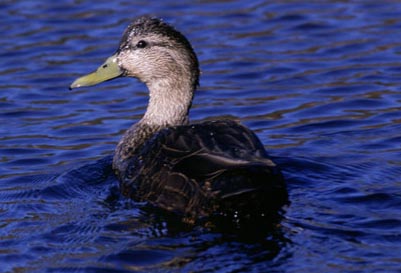Wetlands
Forested wetlands are wooded bottomlands covered with shallow, sometimes intermittent waters that are adequate to support wetland-associated plants. Examples of tree species include cottonwood, black or green ash, black willow, swamp white oak, red maple, silver maple, black spruce, larch or tamarack, and northern white cedar. Beaver ponds are included in this category, but streams, rivers, and deeper lakes that do not support emergent vegetation are not.
Open herbaceous wetlands have few or no trees and are dominated by perennial, emergent, herbaceous vegetation, sometimes with shrubs interspersed; like forested wetlands, they also feature shallow or intermittent waters supporting emergent vegetation. Swamps, marshes, bogs, and fens are examples of herbaceous wetlands.
Breeding birds associated with wetlands have generally fared well. More than three times as many species gained Priority 1 blocks as lost blocks between the two atlases.
Emergent Herbaceous (open) Wetlands
|
Northern Pintail, Common Moorhen, Green Heron, Blue-winged Teal, Pied-billed Grebe, American Coot, Great Egret, Least Bittern, Sedge Wren, Swamp Sparrow, Marsh Wren, Wilson’s Snipe, Virginia Rail, Sora, American Bittern, American Wigeon, Gadwall, Sandhill Crane, Mallard, Canada Goose, Black Tern
|
- Species showing gains in open wetlands included rarities that gained 1 block (Sandhill Crane, Gadwall, American Wigeon), and more common species such as Wilson’s Snipe, Virginia Rail, Sora, and American Bittern, which were found in 22 to 71 percent more blocks during the second Atlas. The latter group is composed entirely of waders.
- The distributions of Canada Goose and Mallard expanded substantially.
- Of the 7 wetland species showing losses in occupied blocks, 5 were associated with open wetlands.
- Northern Pintail was lost from all 5 blocks occupied during the first Atlas, perhaps due to intensification of agricultural practices and a westerly retraction of its distribution.
- Blue-winged Teal block occupancy dropped from 21 to 16, perhaps in part due to earlier and more frequent haying of nesting habitat.
- Green Heron block occupancy dropped from 75 to 47 blocks, from causes unknown.
- Reasons for the decrease from 13 to 8 blocks for Common Moorhen are also unclear, but may have been linked to invasive plants.
Forested Wetlands
|
Common Goldeneye, American Black Duck, Bufflehead, Tree Swallow, Great Blue Heron, Wood Duck, Hooded Merganser, Red-breasted Merganser, Common Merganser, Ring-necked Duck, Green-winged Teal
|
- Block occupancy of most species increased.
- Maturation of forests probably has provided more nest sites for this group.
- Green-winged Teal and Common Goldeneye, the only forest wetland species to decline, were each found in 10 blocks during the first Atlas, but in only 3 and 6 blocks, respectively, during the second Atlas. Reasons behind their decreases are speculative.
- American Black Duck nests in both forested and open wetlands. The species’ 32 percent decrease in block occupancy could be linked to lakeshore development in Vermont, but may also be related to: loss of habitat to development on the wintering grounds; hunting pressure; and/or hybridization with Mallards.








